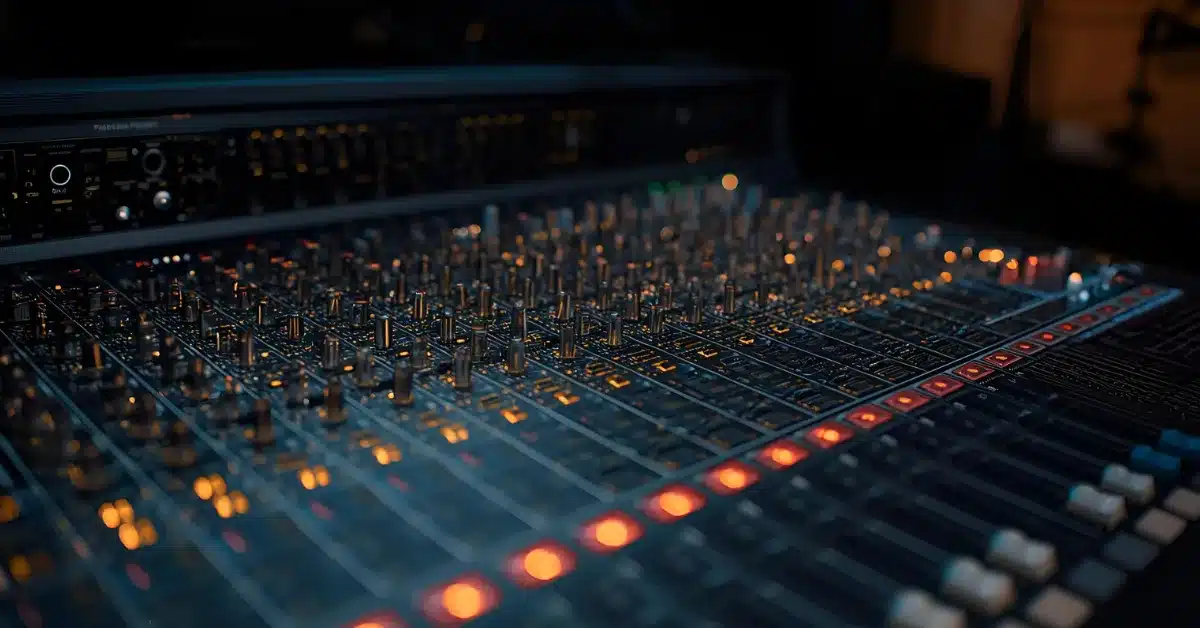Automated mastering – also known as auto mastering or sometimes even referred to as “mastering automatic” in casual terms – is an emerging approach where software algorithms perform the audio mastering process traditionally done by human engineers. In simple terms, automated mastering software uses computational algorithms to create a final master of a song, ready for distribution. This technology has grown popular over the past decade as it offers musicians and producers a fast, affordable way to polish their tracks without needing a dedicated mastering engineer. With advances in artificial intelligence (AI) and machine learning, modern automated mastering services promise instant professional-quality results at the click of a button.
Want to hear it on your own track? Try a fast pass with BeatsToRapOn AI Mastering—built for bass-forward genres with instant WAV/MP3 outputs.
In this research-style paper, we provide a comprehensive analysis of automated mastering. We will explain how automated mastering works, discuss its benefits and challenges, review leading auto mastering tools on the market, and explore future trends in this space. Our goal is to offer audio producers, engineers, and tech-savvy musicians a clear understanding of this technology and to deliver an SEO-optimized resource that can rank at the top of search results for “automated mastering.” (For a quick refresher on fundamentals before mastering, see How to Use Our AI Audio Mastering and Mixing vs. Mastering basics.)
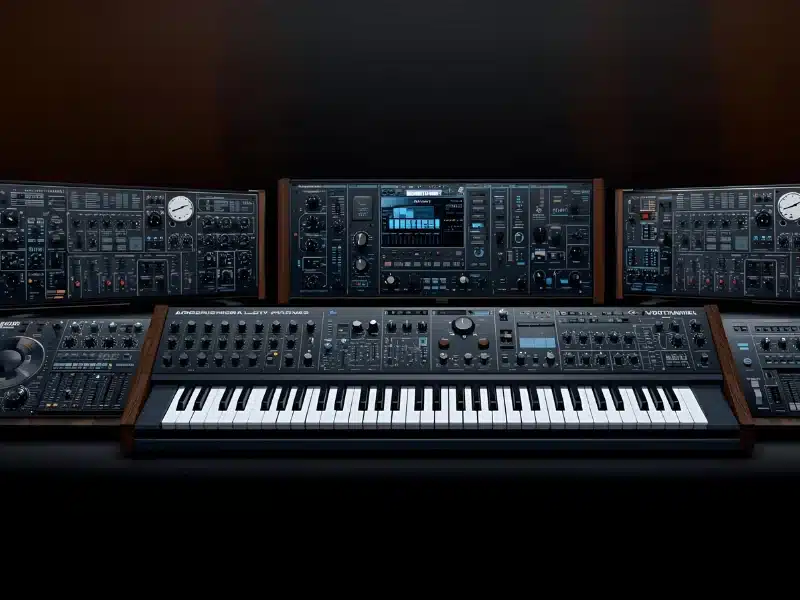
How Automated Mastering Works
Automated mastering systems attempt to replicate the decisions a skilled mastering engineer would make by analyzing your audio and applying targeted processing. At their core, these systems follow a multi-step process:
- Analyze the Mix: The software measures key audio metrics of your mix – such as overall loudness (LUFS), frequency spectrum balance, dynamic range, stereo width, and presence of noise or distortion. Advanced algorithms or AI “listen” to the track to detect its genre and tonal characteristics. Tip: sanity-check tempo/key before you master with the Song Key & BPM Finder (includes Camelot notation).
- Apply Processing: Based on the analysis, the algorithm adjusts mastering parameters to match predetermined targets or references. This can include setting an equalizer to shape tonal balance, adding compression or saturation for punch, adjusting stereo imaging, and applying limiting to raise the loudness to a target level. For example, if the mix is much quieter than the target loudness, an automated master will apply gain via a limiter until the desired level is reached. If the bass frequencies are too high relative to a target curve, the system might reduce them or boost other bands to achieve a balanced sound. Target platform-safe loudness—see The Ultimate Guide to LUFS and Spotify Loudness 2025 (−14 LUFS) Guide.
- Preview and Iterate: Many services allow a preview of the mastered result. Some offer user-selectable options (e.g. choosing a genre or style preset) or let you fine-tune parameters like loudness and EQ before finalizing If changes are made, the software re-processes the audio to update the master. For rapid A/B across versions, iterate inside BeatsToRapOn AI Mastering and compare WAV vs MP3 320.
- Output the Master: The final master file is rendered, often in multiple formats (WAV, MP3, etc.), and ready for distribution. Some platforms even handle metadata like embedding cover art or offer direct upload to streaming services.
It’s important to note that not all automated mastering is “AI mastering.” Traditional automated mastering follows fixed algorithmic rules coded by developers, whereas AI-powered mastering employs machine learning that can adapt based on training data. In practice, many current services are a blend of both approaches. For instance, early automated mastering services were purely algorithmic – applying a set chain of effects with fixed targets. Newer systems incorporate AI for tasks like genre detection and more context-aware decisions — see How AI mastering works (plain-English). As Chet from Beats To Rap On Says “The success of any automated mastering algorithm now depends heavily on the AI leveraged the right way. The days of old algorithms like iZotape, landr and others and other are dead” – meaning the quality depends on how shosphisicated your adaptive AI Agents are. Chet goes on to say “You can see how even our early version complety beat all the old mastering tools”. You can hear this in our side-by-side tests: Valkyrie AI: Beats LANDR for Rap & Hip-Hop and the full Valkyrie vs LANDR vs CloudBounce comparison.
Another distinction in how these services work is the degree of user input. Some platforms require the user to specify a genre or desired style as a starting point. For example, Aria or CloudBounce ask users to pick targets (like genre profiles) which assumes you know the sound you’re after. Others are more hands-off, using AI to infer the best settings automatically. Machine learning makes it easier for an AI mastering system to categorize the music (rock, hip-hop, EDM, etc.) and choose appropriate reference parameters without user guidance In all cases, the goal is to match the track’s audio characteristics to an ideal mastering profile determined by either algorithms or trained AI models. If stems will help your master translate, prep the mix with the AI Stem Splitter & Vocal Remover first.
It’s also worth mentioning that most automated mastering is entirely digital (DSP-based), but one notable service, Aria, uniquely incorporates analog hardware in an automated chain. Aria’s system uses real analog EQs and compressors controlled by robotics to master the track, aiming to combine the “best of both worlds” – the warmth of analog processing with the convenience of automation. This hybrid approach is rare; the vast majority of online mastering platforms process audio in-the-box (via software).
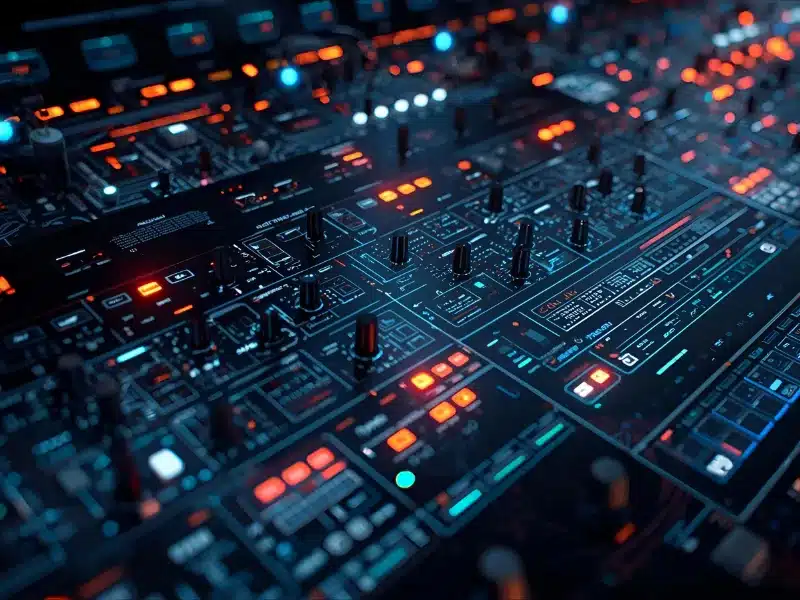
Benefits of Automated Mastering
Automated mastering has quickly gained traction because it offers several compelling benefits for music creators:
- Speed and Convenience: Perhaps the biggest draw is how fast and easy it is. You can get a mastered version of your song in seconds or minutes, any time of day, simply by uploading your mix to an online service. This instant turnaround is a game-changer for artists working on tight deadlines or those who want to hear a quick polished demo There’s no need to schedule studio time – the mastering process is available 24/7 on-demand.
- Affordability: Automated services are generally much cheaper than hiring a professional mastering engineer. Many platforms charge around $10 per track or ~$20–40 per month for unlimited mastering a fraction of the cost of human mastering which might be $50-$200+ per song. This low barrier to entry empowers indie artists on a budget to achieve a loud, polished master suitable for streaming or radio.
- Consistency and Objectivity: Because it’s algorithm-driven, automated mastering will apply a consistent reference standard to every track. This can be useful for maintaining uniform loudness and tonal balance across an album or playlist. The software isn’t influenced by fatigue or subjectivity; it measures technical aspects precisely and delivers reproducible results. For users who want a reliable, repeatable process, auto mastering provides that consistency.
- DIY Empowerment: Automated mastering lets producers who prefer a do-it-yourself approach finalize their music without external help. It can be especially handy for testing out mixes. Artists can tweak their mix, run it through an instant mastering engine, and quickly audition how it might sound as a finished product. This iterative workflow (mix -> auto-master -> evaluate) can improve the final output even if one eventually goes to a human mastering engineer. Additionally, quick previews are often free – e.g., LANDR and others allow free low-res preview masters– so you can experiment with different mastering settings risk-free. Follow this simple loop—export → master → listen → tweak—using our step-by-step mastering guide.
- Improving Quality with AI: Modern AI-based mastering is getting surprisingly good. Some tests have found that masters from top AI services are nearly indistinguishable from professional studio masters in blind listening. The algorithms analyze the audio and make subtle adjustments in EQ, compression, and limiting that can noticeably enhance clarity and punch. For instance, CloudBounce’s AI was praised for delivering an even spectral balance and taming problematic low-end frequencies automatically. While seasoned audiophiles might still hear differences, the gap is closing as the technology improves. For many practical purposes – demos, non-commercial releases, DJ mixes – automated masters are “good enough” to use publicly. As one mastering engineer conceded, for an emerging artist, paying a human might not make sense for every project; automated mastering can be a quick and affordable solution.
- Why next-gen AI-Agent mastering is superior: Unlike traditional automated mastering (aka auto mastering or mastering automatic) that runs a single, fixed chain, the new adaptive Agentic AI (adaptive agentic AI) approach—like BeatsToRapOn’s—uses a coordinated swarm of specialist agents that listen, diagnose, adapt, and optimize in parallel. One agent profiles genre/sub-genre and intent; another analyzes section-by-section (intro, verse, hook, bridge) to apply per-section EQ/comp/limiter targets; a bass/kick masking agent manages 808–kick collisions with musical sidechain rules; a loudness governor hits Spotify/Apple/YouTube targets with true-peak safety and LUFS-integrated alignment; a phase/stereo guardian preserves mono compatibility and stage width; a harshness/de-ess agent tames sibilance only where needed; and a QA sentinel flags clipping, clicks, DC, and transient smearing before render. Because these agents share context (tempo/key/Camelot, spectral balance, crest factor, translation checks) and adapt in real time to your mix, they make context-aware decisions a single algorithm often misses—yielding louder without squashing, tighter low-end, clearer mids, smoother highs, and better platform translation. Add optional reference learning (match a target track’s tonal/loudness fingerprint), album-level consistency across multiple songs, and automatic alternate outputs (WAV 24-bit, MP3 320, streaming-normalized), and adaptive agentit AI mastering delivers faster, more consistent, and more musical results than legacy auto-masters—especially for bass-forward genres like hip-hop, trap, R&B, afrobeats, and dance. Prefer a non-technical explainer? Read Autonomous/Agentic AI Mastering Explained.
Challenges and Limitations
Despite its advantages, automated mastering comes with a number of challenges and limitations that users should understand:
- Lack of Human Judgment: Mastering is about more than dialing in EQ or loudness – it involves critical listening, musical intuition, and sometimes creative choices. Automated systems cannot reliably judge artistic context or intent. A human mastering engineer can detect if a distortion is deliberately artistic or an error, decide how song sequencing and spacing affect an album’s flow, or communicate with the artist for desired outcomes.
- No one-size-fits-most: genre-optimized or bust. The idea that automated mastering (aka auto mastering or mastering automatic) should push every track toward the same loudness curve is flat-out wrong. Music is contextual, so mastering must be genre-optimized and intent-aware, not generalized. For hip-hop/trap, intelligent 808-kick management (sidechain/“tucking”) and controlled sub alignment are essential; for classical, 808 tucking is irrelevant and harmful—the priority is wide dynamic range, transparent EQ, ultra-low noise, and minimal limiting. EDM benefits from transient-safe loudness and stereo energy shaping; jazz often needs gentle, tape-like saturation and conservative bus compression; metal can require multiband control to keep dense guitars from masking vocals; podcasts/dialogue target intelligibility and platform loudness standards, not club SPL. That’s why next-gen adaptive agentit AI (adaptive agentic AI) outperforms legacy one-chain auto mastering: a swarm of specialist agents profiles genre, sub-genre, and section (verse/chorus/bridge), then applies fit-for-purpose EQ, dynamics, stereo, and loudness targets. The result isn’t formulaic “loud and bright,” but genre-true translation—preserving classical crescendos, keeping trap low-end tight, letting EDM transients breathe, and meeting the right platform specs without flattening your mix’s intent as seen Unlocking the Future of Music Production: How an AI Stem Splitter is Changing the Game
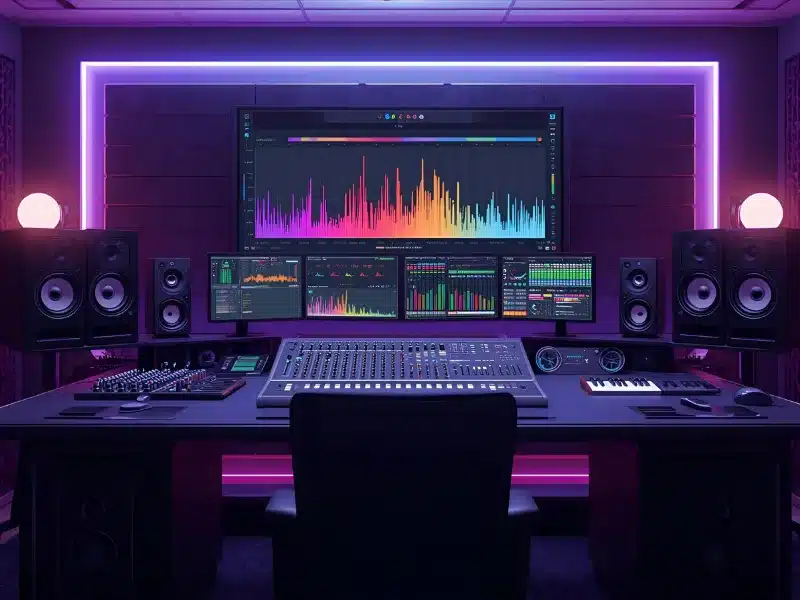
- Limited Customization and Control: While some services allow minor tweaks (like choosing between a few preset styles or adjusting loudness), you generally have far less control than with a human engineer or doing it yourself with plugins. If the first automated result isn’t to your liking, your options for revision are limited. You might be able to try a different preset or upload a “reference track” for the AI to mimic, but you cannot pinpoint “boost 1 dB at 100 Hz” or “de-ess the vocal here” as you could when communicating with an engineer. eMastered, for instance, offers a reference track feature and some options, but it still doesn’t allow the deep tweakability that some advanced users may want. This black-box nature of AI mastering can be frustrating if the result is close-but-not-perfect – you’re stuck with whatever the algorithm decides.
- Potential for Technical Artifacts: Automated tools can sometimes introduce artifacts if misapplied. A common issue is overly aggressive limiting leading to a squashed, fatiguing sound (since the algorithm might push for loudness at the expense of dynamics). Some users report that certain AI masters come out too loud or bright. In one comparison, the default AI settings produced louder masters than ideal, and with limited options to reduce loudness, the control over this “vital aspect” was insufficient. Additionally, if the mix has problems (clipping, imbalance, etc.), an algorithm might not fix them or could even exaggerate them. A human could advise “fix the mix and come back,” but an AI just works with what it’s given – sometimes with subpar results.
- Subscription Pitfalls and Costs: While automated mastering is cheaper in general, some business models can be tricky. Many services push subscription plans that lock users in. For example, eMastered’s pricing led to confusion – users got locked into 12-month commitments when they thought they were on monthly plans. If you only need a few masters occasionally, a monthly fee might end up costing more than a couple of one-time professional masters. In Sage Audio’s analysis, if a user pays ~$300 for an annual plan but only masters 5 tracks that year, it effectively cost $60 per song – approaching the rate of an engineer, but without the personalized feedback a human would have provided. Thus, the perceived cost savings depend on usage volume. It’s wise for musicians to calculate how many tracks they actually need to master and choose a plan (or pay-as-you-go option) that truly makes economic sense. These old types of Subscriptions Fail.
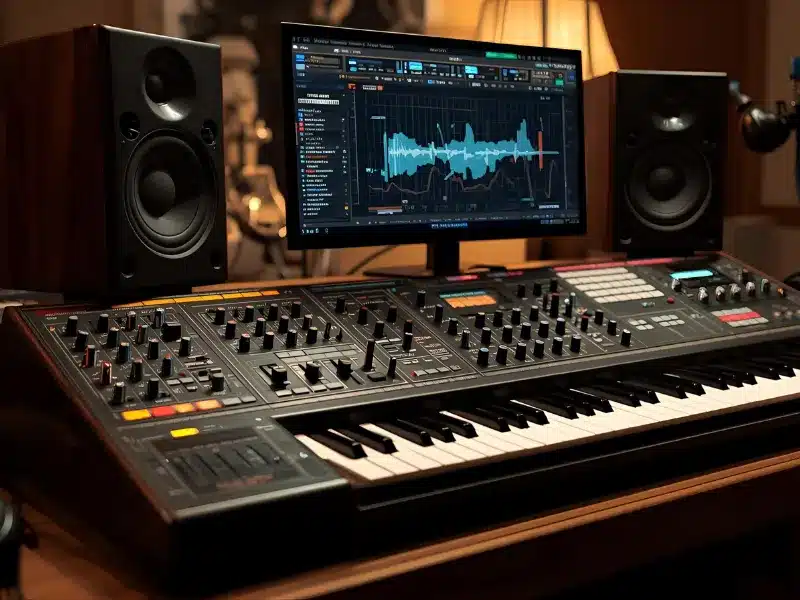
- Why BeatsToRapOn is the ultimate alternative: To avoid the subscription traps of legacy automated mastering (aka auto mastering / mastering automatic), BeatsToRapOn AI Mastering pairs adaptive agentic AI with a creator-friendly model: unlimited mastering runs (iterate freely without per-track anxiety), built-in cloud storage for versions and album projects, top-tier outputs (WAV 24-bit + MP3 320 with streaming-safe true-peak control), and instant sharing links for clients/collabs. Add genre-optimized processing (no one-size-fits-most), album-level consistency, and reference learning, and you get pro-grade results without lock-ins—optimized for speed, quality, and real-world collaboration.
- Audio Source Quality Matters: It should go without saying that automated mastering cannot miraculously fix a bad mix. The old adage “garbage in, garbage out” applies. If your mix is unbalanced or has issues, an AI might polish it slightly but the result will still be flawed. Human engineers often send feedback or request a new mix if they hear a problem in the audio – an automated service won’t do this. It’s up to the user to ensure the mix is as solid as possible before submission. (Many auto-mastering platforms do provide guidelines for mix preparation, which users should follow to avoid poor outcomes.) Start with these mix prep tips for rap vocals and beats to avoid common mastering fails.
In summary, while auto mastering is an efficient solution for many scenarios, it’s not a complete replacement for the human touch in every case. Complex projects, major release albums, or music where the artist’s vision is very specific may still benefit greatly from traditional mastering. Automated tools are best seen as another option in the producer’s toolkit – one that excels in speed and cost-effectiveness, but with inherent trade-offs in finesse and customization.
Leading Tools and Services for Auto Mastering
The surge in popularity of automated mastering has led to a competitive landscape of online tools and services. Each platform has its own approach and feature set. Many top-ranking pages on Google for “automated mastering” are actually the homepages of these services, underlining how central they are to the topic. In this section, we’ll highlight some of the leading auto mastering platforms widely used by musicians today. These include pure online services as well as AI-driven mastering plugins. Table 1 below provides a comparison of recommended tools, including their key features, pricing, and pros/cons.
Notable players in this space range from dedicated AI mastering services like BeatsToRapOn, LANDR, eMastered, CloudBounce, Aria, and MasteringBOX, to integrated offerings from music platforms like BandLab. Even traditional audio companies are incorporating AI mastering (for example, iZotope’s Ozone has a Master Assistant feature, and services like TuneCore/Ditto offer simple online mastering for their users). For our competitive analysis, we focus on services that consistently appear in top search results and are well-regarded in the audio community These services have collectively amassed thousands of users and have become go-to solutions for instant mastering.
Table 1. Recommended Automated Mastering Tools & Services (features, pricing, pros, and cons):
| Tool/Service | Key Features | Pricing | Pros | Cons |
|---|---|---|---|---|
| BeatsToRapOn AI Mastering ⭐ ⭐ ⭐ ⭐ ⭐ Best State-of-the-art | Adaptive agentit AI (agentic) swarm: genre & section profiling; per-section EQ/comp/limit; 808–kick masking agent; loudness governor (Spotify/Apple/YouTube); phase/stereo guardian; de-ess/harshness control; QA sentinel. Unlimited mastering runs, cloud storage & versioning, WAV 24-bit + MP3 320, instant share links, album-level consistency, reference learning, seamless prep with. | Transparent, creator-friendly (see pricing). Unlimited Use. | Ultimate creator workflow: iterate freely with unlimited runs; genre-optimized (no one-size-fits-most); fast previews + easy sharing; album uniformity; reference matching; built-in storage for projects/collabs. | None. |
| LANDR – AI Mastering + Distribution (old way of mastering) | AI cloud mastering & plugin; style presets; album mastering; extras (distribution, samples, plugins). | ~$9.99/single; subs from ~$11.99–$15.99/mo (limits for WAV). | Mature platform; style choices; bundled ecosystem. | Unlimited high-quality masters require higher tiers; results can feel generic without tweaking. |
| eMastered – Online Mastering (old way of mastering) | AI engine informed by Grammy engineers; reference track matching; simple UI. | Subscriptions (monthly/annual). | Easy to use; clean sound; reference feature. | Annual lock-in confusion reported by some; fewer extras; can be less dynamic than peers. |
| CloudBounce – Genre-Based (old way of mastering) | 15+ genre options; post-master tweaks (loudness/brightness/warmth); web + desktop; batch. | ~$9.90/track; ~$21.90/mo unlimited. | Flexible tailoring; desktop offline; high subjective quality. | UI can feel cluttered; occasional slow web queue. |
| Aria – Analog Robot Mastering (old way of mastering) | Automated analog chain (EQ/comp hardware) controlled by AI; 24/7 online. | ~15-sec free demo; plans from ~$49/mo (quota). | True analog tone; engineered by a top ME. | Higher cost; limited controls; not instant full-track previews. |
| BandLab Mastering – Free (really bad lol – there is a reason it is free) | 4 presets (Universal/Fire/Clarity/Tape); unlimited uploads; web/mobile. | Free (optional membership for extras). | Zero cost; very simple; fast demos. | Minimal control; limited quality/format options. |
| MasteringBOX – AI + Controls (old way of mastering) | AI analysis; user loudness & 3-band EQ; album/DDL/DDP; free tier + mobile. | Free MP3/day; ~$7–$19/mo tiers. | More tweakability at low price; album tools. | Less polished sound vs. top AIs (subjective); basic UI. |
As the market is evolving, pricing and features may change, so it’s wise to check the latest details on each provider’s website.
Future Trends in Automated Mastering
Automated mastering is a fast-moving field, and we can expect significant advancements as technology and industry adoption grow. Here are some future trends and developments to watch for in the realm of automated and AI-driven mastering:
- Smarter AI and Machine Learning: The next generation of mastering AIs will likely become more sophisticated and “musical.” Future systems are anticipated to account for far more variables in audio and make nuanced decisions that current algorithms might miss This could mean an AI that understands the emotional intent of a song or can adapt its processing more sensitively to different sub-genres. As one article noted, automated mastering software will no doubt become more complex in the near future as developers find ways to encode more of an engineer’s knowledge into the algorithms. Deep learning techniques could enable AIs that learn from each mastering job – improving over time by evaluating how listeners respond or by training on vast amounts of mastered music. This might narrow the quality gap further between auto and human masters. We track these advances in a live primer: AI Audio Mastering: The Future.
- Greater Personalization: We may see AI mastering services offering more personalized styles, almost like choosing a specific mastering engineer’s “ear.” In fact, experts predict a future where renowned mastering houses or engineers create their signature AI profiles – for example, a “Sterling Sound AI” or “Abbey Road AI” – allowing artists to pick an AI that emulates a particular sound aesthetic. This kind of brand-based AI mastering could combine the cachet of top engineers with the scalability of software. Additionally, user-side personalization will improve: instead of a handful of presets, you might input descriptors (“make it warmer but keep the vocals upfront”) and the AI will adjust accordingly. Schema-based feedback loops could even let the AI ask the user questions (“Did you want the master brighter? Yes/No”) to hone in on the desired result – blending automated efficiency with a touch of interactive customization.
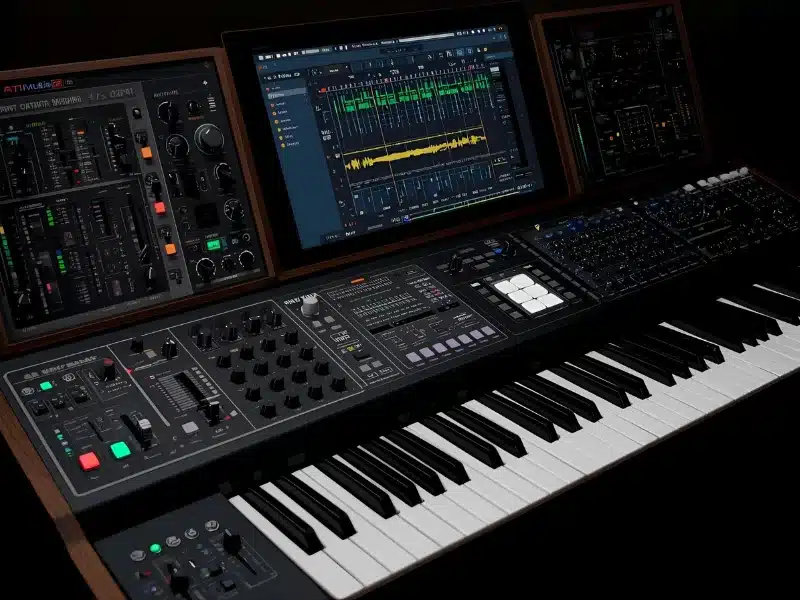
- Integration with Creation Platforms: Automated mastering is likely to become a seamless part of the music creation and distribution pipeline. We already see integration – e.g., BandLab offers built-in mastering when you finish a mix, TuneCore and Ditto (distributors) have one-click mastering services, and DAW plugins like iZotope Ozone’s Master Assistant provide AI suggestions within your mixing session. In the future, your digital audio workstation might have an AI mastering assistant running in real-time, constantly suggesting improvements as you mix. Cloud mastering services could integrate with streaming platforms so that once you finish a song, the mastered version is automatically generated and sent to stores with minimal user action. This tight integration will make mastering less of a separate step and more an invisible co-creator in the music production process.
- Improved Audio Quality and Transparency: The quality of automated masters will continue to improve as algorithms get better at addressing specific issues. For example, future systems might handle things like de-essing harsh vocals or correcting phase issues in a mix, tasks that current services often cannot do well without manual intervention. Also, we expect AI mastering to become more transparent – preserving the character of the mix without unintended colorations. Early criticisms of instant mastering were that it could make tracks sound homogenized; through AI training on diverse data and more refined processing, the outcome should respect the artist’s original mix more faithfully (only enhancing, not altering the vibe). Some developers are focusing on adaptive mastering that changes its strategy depending on the content (a heavy bass track might get a different processing chain than an acoustic ballad, for instance). This content-aware approach will make automated mastering feel more “aware” of the music’s needs, much like a human engineer adjusting technique per song.
- Broader Acceptance and Use Cases: As automated mastering becomes mainstream, its role might expand beyond just final stereo masters. We could see AI “mastering” applied in live sound (instant venue optimization), broadcasting/podcasting (auto-leveling and sweetening audio streams in real-time), and even as a learning tool for budding engineers (e.g., AI suggests what EQ moves to make on a mix). The stigma that some audio purists initially had – “AI can’t do art” – is fading as successful use cases grow. It’s conceivable that in a few years, even high-profile releases might quietly use AI for a first pass master, with human engineers then fine-tuning, thus creating a hybrid workflow. The coexistence of AI and human mastering is likely, rather than one fully displacing the other. AI can handle the heavy lifting and provide a solid starting point, and humans can add final polish where needed. This collaboration could make the mastering process more efficient overall, allowing human experts to focus on the truly critical listening decisions.
In summary, the future of automated mastering looks very promising. We’re heading toward a scenario where AI-driven mastering is faster, smarter, and more customized. The technology is in its relative infancy today – comparable to where human mastering was in its early days – but it’s evolving rapidly. Audio professionals and hobbyists alike should keep an eye on these trends, as they will shape how music is finished and delivered in the coming decade.
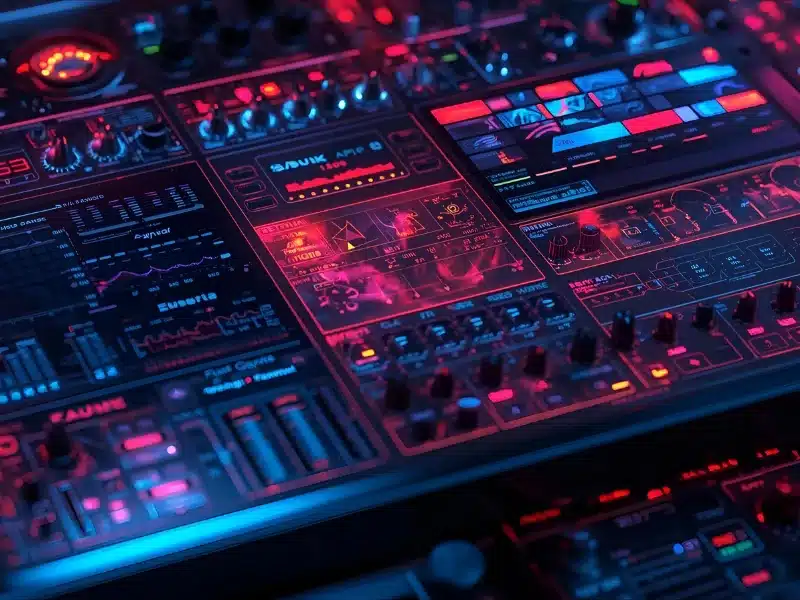
Conclusion
Automated mastering has transitioned from a curiosity to a reliable tool in the music production landscape. In this paper, we’ve examined how auto mastering works, its pros and cons, and the key players providing these services. The structure and content of top-ranking pages on the topic tend to cover similar ground – defining the concept, explaining algorithmic vs AI approaches, weighing benefits vs limitations, and often reviewing popular services – and we have mirrored that comprehensive approach here to provide the most relevant information. By incorporating semantic variations like AI mastering, algorithmic mastering, and online mastering services, we’ve aimed to cover the full spectrum of the topic in a way that is accessible to producers and engineers searching for efficient solutions.
To recap, automated mastering offers unprecedented speed and cost savings for getting music release-ready. It leverages advanced algorithms and AI to handle common mastering tasks – from EQ and compression to loudness normalization – often with impressive results. Services like BeatsToRapOn AI Mastering, LANDR, eMastered, CloudBounce, Aria, MasteringBOX, and BandLab have lowered the barrier for achieving a professional sound, each with its own niche strengths. However, it’s clear that this technology is not a one-size-fits-all answer. Critical listening by experienced human ears is still the gold standard for many aspects of mastering, especially when a project demands special attention or when creative decisions need to be made.
Automated mastering is definitely here to stay and will only grow more powerful. It exemplifies how technology can augment creative workflows, allowing musicians to focus more on the creative aspects while delegating technical chores to intelligent tools. As we become more accustomed to these services and as the algorithms improve, the line between automated and traditional mastering may continue to blur. For now, artists have the luxury of choice: use these auto mastering tools to quickly polish your tracks, and do so with the understanding of their strengths and limitations. By staying informed (through articles like this) and by actively listening and comparing results, you can leverage automated mastering to its fullest – achieving release-ready sound quality efficiently, and knowing when to trust the AI versus when to call on human expertise. The future of mastering is evolving, and it’s an exciting, hybrid, and increasingly automated journey.
Automated Mastering FAQ (BeatsToRapOn)
What is automated mastering and how does BeatsToRapOn improve it?
Automated mastering (also called auto mastering or “mastering automatic”) uses software to finalize a mix with EQ, compression, limiting, and loudness normalization. BeatsToRapOn AI Mastering goes beyond fixed chains with adaptive agentit AI (agentic): a swarm of specialist agents that listen, diagnose, and optimize by genre and by song section for cleaner low-end, clearer mids, smooth highs, and streaming-safe loudness.
Why is adaptive agentit AI better than one-size-fits-most auto mastering?
One-size targets can flatten your intent. BeatsToRapOn applies genre-optimized profiles (hip-hop/trap, R&B, EDM, pop, jazz, classical, podcasts) and section-aware moves (intro/verse/hook/bridge) so your master translates without sounding generic. Example: 808 “tucking” is great for trap, but irrelevant for classical—our agents know the difference.
Do I get unlimited mastering runs and built-in storage?
Yes. BeatsToRapOn includes unlimited mastering runs so you can iterate freely, plus cloud storage & versioning for singles and albums. Share progress or finals instantly via secure links for collaborators and clients.
What output quality and formats are supported?
High-fidelity exports: WAV 24-bit and MP3 320 kbps, with true-peak control and LUFS-aligned loudness suitable for Spotify, Apple Music, YouTube, and more.
Can BeatsToRapOn keep an album consistent track-to-track?
Yes. Our album consistency agent maintains tonal balance, loudness, and perceived dynamics across multiple songs—ideal for EPs, LPs, and compilations.
How does the AI handle low-end and 808s without killing dynamics?
A dedicated bass/kick masking agent manages 808-kick collisions with musical sidechain and EQ moves, tightening subs while preserving punch and headroom—perfect for bass-forward genres.
Can I master from stems for better results?
Yes—prep cleaner mixes with our AI Stem Splitter (vocals, drums, bass, instruments). Cleaner stems lead to faster, higher-quality automated mastering with fewer artifacts.
What loudness targets does BeatsToRapOn use?
Our loudness governor aims platform-appropriate targets (e.g., LUFS-I and true-peak) for Spotify, Apple Music, YouTube, SoundCloud, radio, and club contexts, with genre-sensitive dynamics so your master stays punchy, not squashed.
Can I use a reference track?
Yes. Reference learning lets the system analyze a target song’s tonal and loudness fingerprint, then gently match your master for competitive but tasteful results.
Is it suitable for classical, jazz, podcasts, or film cues?
Absolutely. For dynamic content (classical, jazz, film), the agents prioritize transparency, stereo image, and noise control over sheer loudness. For dialogue/podcasts, we target intelligibility, sibilance control, and platform specs.
How fast is it, and can I share preview links?
Turnaround is typically minutes. You can generate instant preview links for approvals, then export final WAV/MP3 when ready—no emailing large files.
How is pricing structured?
BeatsToRapOn offers a creator-friendly model emphasizing unlimited iterations, included storage, and high-quality deliverables. See current details at beatstorapon.com/ai-mastering.
